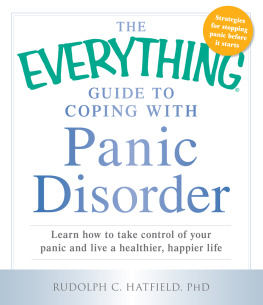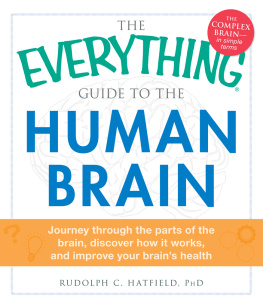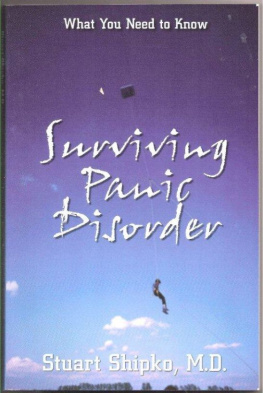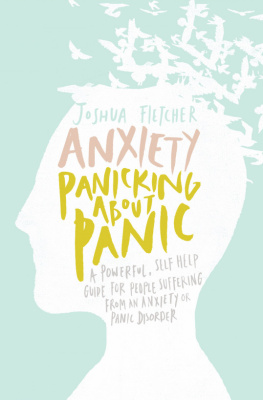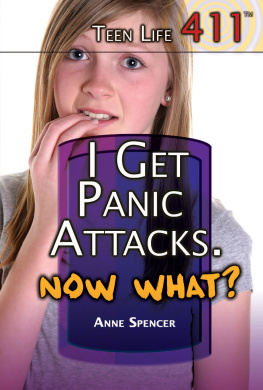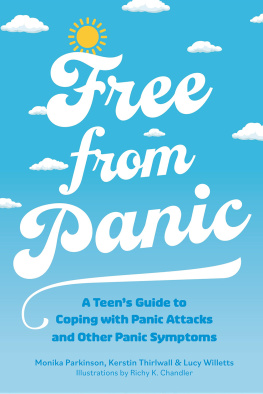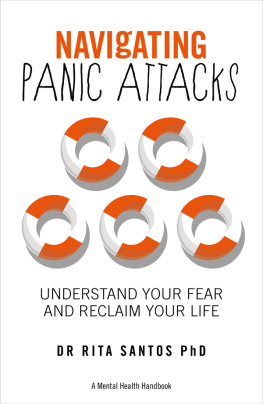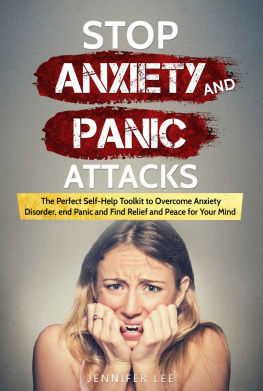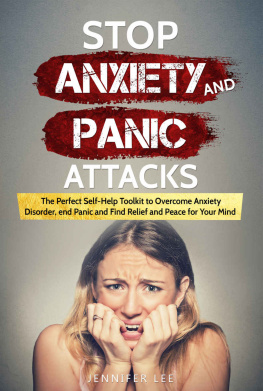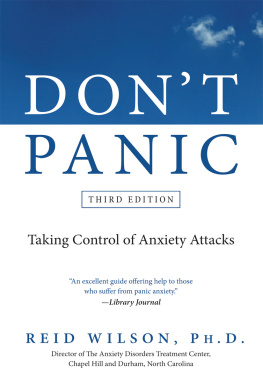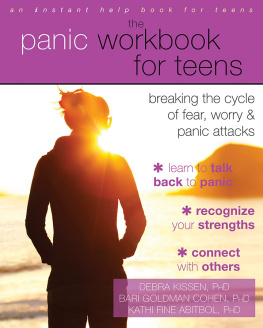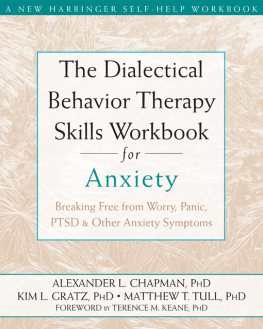THE

GUIDE TO COPING
WITH PANIC DISORDER
Learn how to take control of your panic and live a healthier, happier life
Rudolph C. Hatfield, PhD

Avon, Massachusetts
To my family, who have put up with all my antics over the years.
Contents
The Top 10 Facts about Panic Disorder
- Panic disorder is classified as an anxiety disorder. This is a class of psychiatric disorders where the major symptom is anxiety.
- Having recurrent unexpected panic attacks is the major symptom, but not the only symptom, of panic disorder.
- Panic attacks are periods of sudden intense anxiety that can also occur as a part of other psychiatric disorders, as a result of a medical or medication issue, and in people who do not have psychological of medical disorders.
- There are a number of theories regarding the cause of panic disorder that incorporate both biological and psychological contributions.
- The most often implicated biological cause of panic disorder is a disruption of the fight-or-flight mechanism.
- Agoraphobia, the fear of being in places where one cannot escape, used to be exclusively associated with panic disorder but is now considered a separate anxiety disorder.
- The vast majority of people who are diagnosed with panic disorder will also be diagnosed with another psychiatric disorder, most often with depression.
- Medications commonly used for treating panic disorder include a class of antidepressants and the minor tranquilizers (benzodiazepines).
- The form of treatment most often recommended for panic disorder is cognitive behavioral psychotherapy, but several alternative and complementary treatments may also be helpful.
- At one time panic disorder was considered only to occur in adults, but it is now recognized that panic disorder can occur in children and adolescents as well.
Introduction
PEOPLE WHO HAVE PANIC DISORDER experience sudden and repeated attacks of severe anxiety or fear that can last for several minutes or longer. These episodes are more commonly known as panic attacks. The feelings experienced during a panic attack are so intense and so alarming to people that they often feel that they are about to experience another disaster, or that they are going to lose control even in situations when there is no such danger. Panic attacks can be so powerful that they can mimic heart attacks or other very serious medical conditions.
These attacks can occur at any time, and therefore, people with panic disorder tend to worry about them so much that it affects every aspect of their lives. This disorder is so overwhelming that people often become discouraged and feel ashamed because they find it difficult to carry out normal activities or perform normal routines like going to the grocery store, going out in public, driving, going to work, or going to social events. Does this sound like something youve experienced before? You are not alone.
Psychiatric disorders like panic disorder tend to run in families; however, at the present time it is not known why certain people develop panic disorder and other people do not. Heredity does not fully explain the disorder, and having an occasional panic attack is actually a common event affecting nearly one-fifth of the population in the United States. Panic disorder is not nearly as prevalent (the American Psychological Association reports that about one in seventy-five people will develop it). Research into panic disorder has indicated the potential involvement of several different brain neurotransmitters, several potential changes that occur in different parts of the brain, and other factors that are associated with getting panic attacks and developing panic disorder. Nonetheless, no one knows what the cause of panic disorder is.
The typical case of panic disorder is a person who presents with anxiety and anticipation of his next panic attack, limits his activities in anticipation of potential panic attacks, and lets this fear and anxiety dictate his life. If you share these symptoms, dont worry. The outlook should not be this bleak.
Anxiety is a fact of life; however, suffering from a disabling anxiety disorder like panic disorder does not have to be. Many people who suffer from repeated panic attacks but do not have panic disorder have medical issues that can be treated. People with panic disorder require special methods to address their particular issues. The potential for effective treatments is very real, and there are many options for everyone who suffers from panic disorder to explore. There are also a number of so-called treatments for panic disorder that are not effective. It is extremely important for anyone suffering from any type of psychological or psychiatric disorder to be able to ascertain what types of treatment options are potentially effective and what treatment options are not. This may sound complicated; however, it only requires a very basic understanding of what to look for.
No one who has panic disorder should be a prisoner of this anxiety disorder. This book discusses the relevant issues of anxiety, panic attacks, and panic disorder and outlines the empirical evidence for the majority of treatment options available for anyone who suffers with panic disorder. This information arms you with the necessary means to combat this condition and change your situation. With The Everything Guide to Coping with Panic Disorder, youll learn how to gain control over your panic and anxiety using a variety of easy-to-understand techniques.
CHAPTER 1
The Nature of Psychological/Psychiatric Disorders
What is a psychological or psychiatric disorder? Surprisingly, most people do not understand the difference between common, everyday emotional experiences like feeling down or depressed and an actual psychological/psychiatric disorder. For instance, everyone feels nervous or anxious at one time or another; however, having a type of anxiety disorder is much more severe and disabling than normal anxiety. This chapter discusses what a psychiatric disorder or mental illness actually is, how these differ from normal experiences, how these are conceptualized, and how mental health professionals diagnose them.

It is quite easy to get caught up in trying to figure out the different designations of psychological disorders. To avoid any confusion, the terms psychological disorder, psychiatric disorder, mental illness, and mental disorder generally refer to the same thing; therefore, these terms will be used interchangeably throughout this book.
The DSM Defined
Believe it or not, the definition of what comprises a mental disorder is not as clear as you may think. In the United States, mental health workers refer to the most current version of the DSM series to define and diagnose mental disorders (DSM stands for Diagnostic and Statistical Manual of Mental Disorders). At the time of this writing, the current upgrade to the DSM is the DSM-5, which was formerly released in May of 2013. A thorough explanation of the development of the DSM is beyond the scope of this book; however, in order to understand how psychiatric disorders are conceptualized, a brief history is in order.

